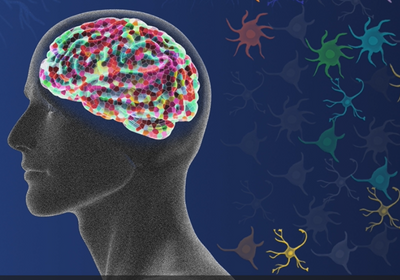ABOVE: © ISTOCK.COM, Oksana Restenko
A lot of things can make us itch: rashes, bug bites, even just the thought of an insect crawling on our skin. Both chemicals such as histamines and mechanical stimuli such as an errant thread on a wool sweater can give us an urge to scratch. And while scientists know a lot about how chemicals stimulate our itch-sensing pathways, until recently, they knew little about how touch can do the same.
A study published today (June 22) in Nature finds that a subset of neurons, previously thought to be sensitive only to chemically induced itch, also respond to touch. Researchers at the Scripps Institute found that these neurons make use of the PIEZO1 protein, an ion channel previously thought to be nearly absent in these cells, to sense touch-evoked itch.
“The discovery of Piezo1 in primary afferent neurons mediating forms of touch evoked itch was remarkable,” Taylor Follansbee, a neuroscientist at the Johns Hopkins School of Medicine who was not involved in the study but coauthored an accompanying News and Views article, writes in an email to The Scientist.
The mechanisms underlying touch-evoked itch are one of the “last unknown areas of sensory biology,” says Rose Hill, a neuroscientist at the Scripps Research Institute in California and coauthor of the study. After the Nobel-winning discovery of two touch-sensitive ion channels—PIEZO1 and PIEZO2 (shared by the new study’s coauthor, Ardem Patapoutian)—scientists hypothesized that they might be involved in itch. But since PIEZO1 is expressed at very low levels in sensory neurons, PIEZO2 was thought to play the bigger role.
See: “Mechanisms of Chili’s Heat, Menthol’s Cool Garner Nobel”
When the new study began, Hill was studying PIEZO2’s role in sensation in Patapoutian’s lab. She was staining sensory neurons for PIEZO1 as a control, expecting to see almost no evidence of the protein. Instead, she saw that some itch-sensing neurons—those sensitive to chemical stimuli—expressed PIEZO1, but not PIEZO2. “It was a very surprising finding that [PIEZO1] was there. . . . The itch neurons that express PIEZO1 were thought to only sense chemicals,” explains Hill.
So she and her colleagues began probing PIEZO1’s role in itch. First, the researchers used small interfering RNA (siRNA) to knock out the Piezo1 gene in cultured mouse sensory neurons, the ones Hill had found expressed PIEZO1. She then used a small glass probe to poke these cells while performing electrophysiology, and found that the electrical currents in response to these pokes largely disappeared when they deleted the Piezo1 gene.
Next, the researchers eliminated the protein in vivo. They engineered mice that lacked the Piezo1 gene in its chemically sensitive, itch-sensing neurons. They examined itch responses by lightly touching the mice on their necks or ears with a thin nylon filament, which typically evokes scratching. Mice lacking the Piezo1 gene scratched significantly less than normal mice. Meanwhile, injecting the PIEZO1-activating drug Yoda1 into normal mice boosted scratching behaviors.
The researchers also ran experiments with a mouse model of atopic dermatitis, a condition characterized by chronic itch. After deleting the Piezo1 gene in these mice, the mice scratched significantly less often than mice with the functional gene. All of this evidence, Hill says, indicates that PIEZO1 is important for sensing itch.
While touch-evoked itch can be beneficial (for getting a parasite off your skin, for example), it can also be harmful. According to Hill, 10 percent of people will suffer from chronic itch at some point in their lives. She says that this study could help researchers develop treatments for the chronic itch that comes with certain devastating diseases, such as autoimmune disorders.
“There is therapeutic potential for humans since we also express Piezo1 and it would be . . . possible” to block the PIEZO1 channel, Follansbee agrees. He adds that human studies are a necessary next step to understanding PIEZO1’s role in the human sensory system.







